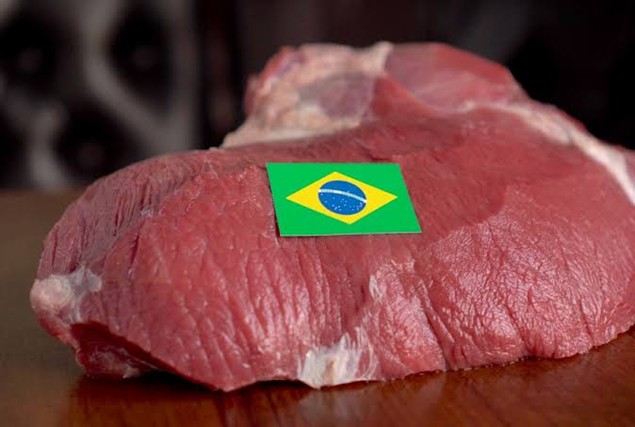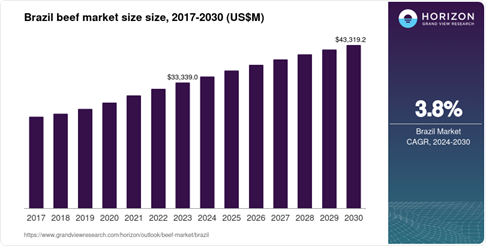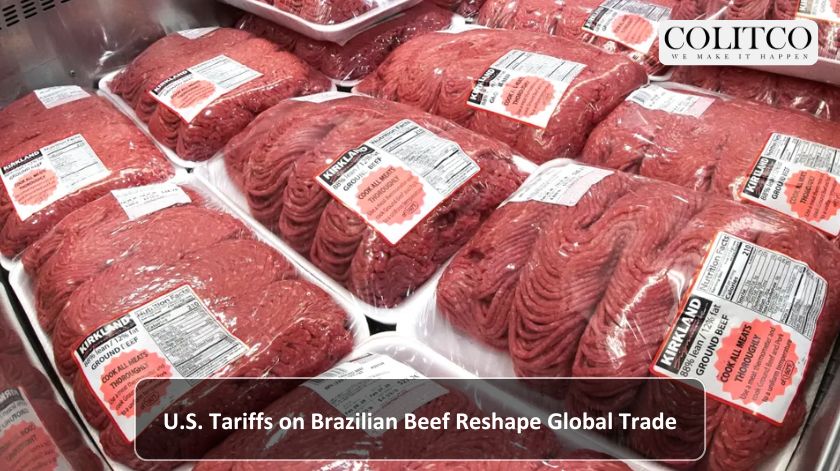Tariffs The 50% tariff on Brazilian beef imports has put Brazil in an unfavorable position. This is because they are known to be the top beef exporter in the world and now have difficulties keeping their market share in the United States. Such policies from the United States have already begun affecting global trade, and in the long run, they might have a great impact on the international beef market. While the U.S. is dealing with trade violations related to Brazil’s former president, Brazil is also dealing with strong opposition and is considering taking legal action in U.S. courts. In the meantime, other international markets are making attempts to bridge the emerging gaps.

U.S. 50% Tariff Puts Brazilian Beef Exports at Risk
What Led to the U.S. Tariffs?
In the initial days of August 2025, Donald Trump announced the tariff increase of 50%, citing unfair trade practices by Brazilian exporters. Finance Minister Fernando Haddad also stated that Brazil is most likely to challenge these tariffs in the U.S. court of law. He on the other hand emphasised Brazil’s dedication to free and fair trade. In any case, this poses as diplomatic and legal uncertainty for the global beef trade.
How Are Global Beef Trade Flows Changing?
Immediately following the implementation of the new tariffs, trade routes began to shift. Mexico surpassed the United States to become the second-largest beef export market for Brazil. Between August 1 and August 25, 2025, Brazil exported 10,200 metric tons to Mexico, which amounted to $58.8 million.
During the same period, shipments to the United States were only 7,800 metric tons, valued at $43.6 million. This indirect trade strategy is expected to sustain Brazil’s beef exports, with Mexico and Argentina likely to import and re-export Brazilian beef to the United States.
In Asia and Oceania, Brazilian exporters are investigating new opportunities. Strategic diversification is further emphasised by increased shipments to Australia and Japan. These initiatives intend to counterbalance the decline in demand from the United States.
What Are the Implications for Brazil’s Beef Exports?
Such redirections of trade routes come with added costs. Brazilian consultancy Athenagro, even with the new tariffs, expects beef exports to grow by 7.5% in 2025. They could reach 3.08 million metric tons in total.
The Brazilian government is also taking steps to assist exporters. There are financial credit lines and government purchasing programs for surplus products in place. And, should the tariffs remain, legal action is on the table, as stated by President Luiz Inácio Lula da Silva.
Some analysts perceive that the increased logistical costs due to rerouted trade flows will bring about a host of transient troubles, such as short-lived delays and a shake-up in prices. However, Brazil’s diversified markets may stabilise revenues over the next year.

Brazilian Beef Market Forecast
How Are Other Countries Responding?
The U.S. tariffs on Brazilian beef could be a boon to Australia and other beef exporters. As Brazil searches for new markets, there could be an increased demand for Australian beef. In September 2025, Mexico plans to audit 14 Brazilian meatpacking plants. If these factories are approved, they would be allowed to export beef to Mexico, which would deepen Brazil’s integration into the regional supply chains. Several other countries are closely following global changes to identify where they can gain from trade.
What Measures Is Brazil Taking?
Brazil has unveiled an assistance package worth $5.5 billion for the exporters it expects to be affected the most. Among other things, the package provides credit facilities and government purchases of the affected products.
These measures appear to be attuned to the president’s goal of minimising the impact on the markets. President Lula explicitly mentioned Brazil will hold off from retaliating, though legal retaliation is on the table if the tariffs from the U.S. persist.
The consensus among analysts is that the measures go a long way in helping exporters cope with the uncertainty in the near term. Additionally, Brazil is in discussions with markets in Asia, the EU, and Oceania. This demonstrates that the government is focusing on trade diversification from the U.S. market for the longer term.
What Does This Mean for Global Beef Consumers?
There may be unpredictable changes to the prices of beef that meat buyers around the world may have to pay. The reshuffling of trades and supply lines may result in short-term unavailability of stock.
The prices may increase for countries that are importing Brazilian beef through Mexico or Argentina. The prices may be affected by the rising demands of beef from Australia and Japan. For the rest of 2025 and especially in the North American and Asian markets, the instability of the beef prices is likely to continue, as stated by the analysts.
Market stability is expected to improve in the long run with new contracts for exports and returning stock lines. The prices of products are expected to be stable for consumers by 2026, the second half.
Conclusion
A tariff of fifty percent on Brazilian cattle imports marks a significant change in world trade. Although Brazil continues to face challenges, it pushes further into new markets. Demand adjustments usher in changes in target markets for both Australia and Mexico. While consumers across the globe might face a change in prices in the near future, the change in market policies and the aid of the government may help in the normalisation of Brazil’s cattle exports in the future. The world cattle region trade is stepping into an epoch of strategic realignment.












